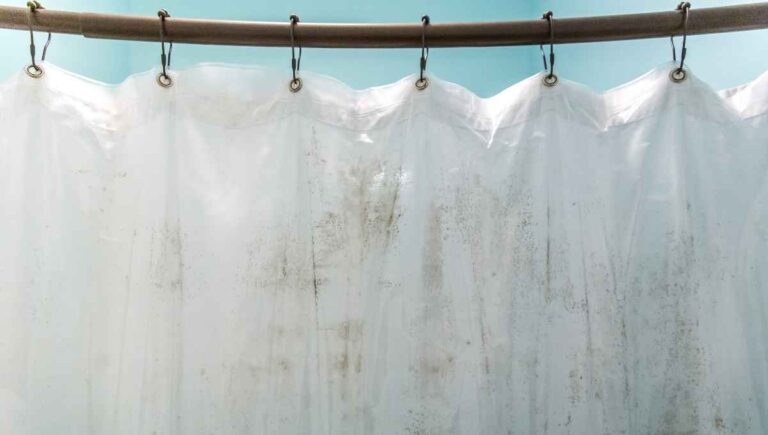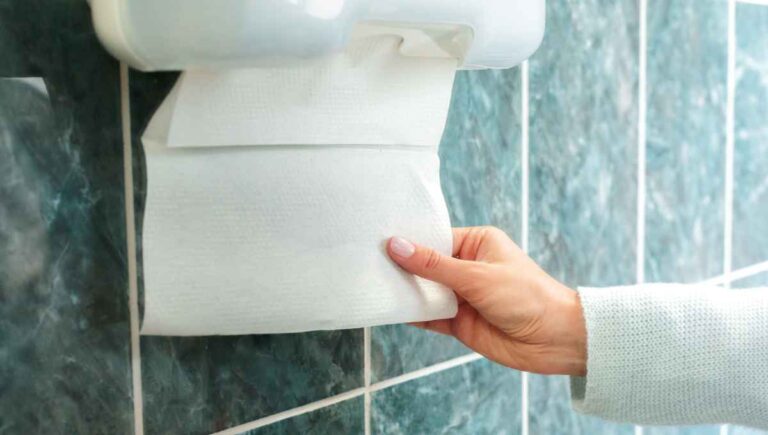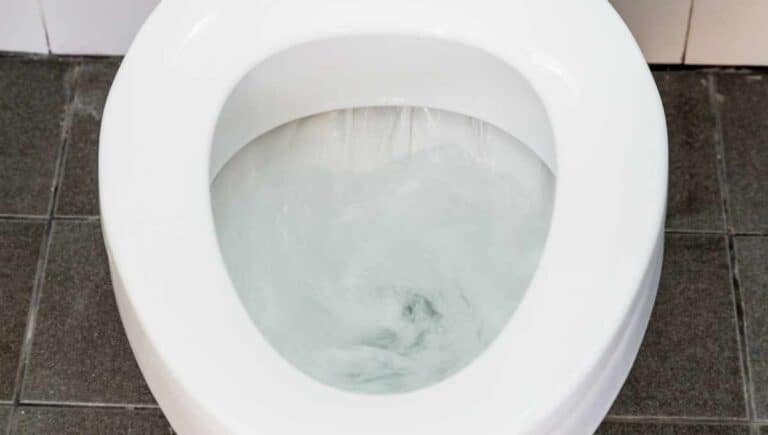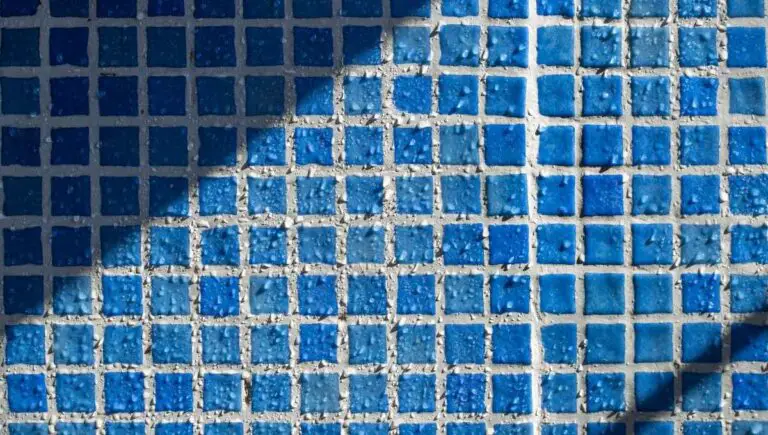Do Bath Mats Damage Tubs? (What to Know Before Buying)

Bath mats are a useful tool when slipping in the tub is a concern. Unfortunately, some bath mats risk damaging a tub and lack reliability when it comes to preventing falls. But do all bath mats damage tubs?
Bath mats can scratch or damage the finishing on a tub if they are made of hard plastic. Some bath mats use plastic suction cups to aid in keeping the mat in place, which can sometimes leave scratches on the tub. Bath mats can also harbor mold or mildew if they are not regularly cleaned.
Thankfully, there are safer options that will not scratch your tub. For example, there are bath mats that are made of durable and soft rubber.
In this article, we suggest various options to meet your needs best and how to care for your mat and bathtub to prevent damage and stains.
This post contains affiliate links. This means Household Blogger may earn a commission should you make a purchase using any of our links. Please refer to our full affiliate disclosure policy for full details.
Here’s a Quick Pro Tip!
To make sure your bath mat does not damage your tub, buy a high-quality rubber bath mat without suction cups. Also, clean your mat and tub at least once a week.
Here are some mats and a cleaning solution we suggest from Amazon:
1. Better Life Natural Tub and Tile Cleaner – This is a cleaner that comes from an environmentally minded company. Their products are effective and gentle on all surfaces. This can be used to clean a rubber bath mat.
2. Refinished Bath Solutions No Suction Cup Bath Mat – This bathtub mat is perfect for children. It’s easy to clean and has holes so that water will drain out faster. Also, it doesn’t have suction cups that tend to trap grime.
3. Deluxe Bath Tub and Shower Mat – This bath mat also has drain holes and is machine washable.
General Info About Bath Mats
Bath mats are simple objects, but they can keep our loved ones and us safe by providing traction to a slippery bathtub. However, there are some things to consider before purchasing one.
Should You Use a Mat in the Bathtub?
Mats are not necessary for the bathtub, but they can prevent falls by providing traction while taking a shower or getting in and out of the tub. Tubs can become slippery during a bath or shower from lotions and conditioners.
Mats, or silicon decals, are most helpful for children, physically disabled individuals, and the elderly.
Mats are convenient because you can remove them and clean them more easily than the decals that adhere to the tub.
Why are Rubber Bath Mats Useful?
Rubber bath mats add traction to any bathtub or shower to prevent falls. This helps any individual because your bathtub can become slick with lotions and conditioners, but it helps children, those who are physically disabled, and the elderly.
You can also buy silicon decals to stick on the tub. These are convenient and can be placed where you need them most, unlike a rubber bath mat.
However, a rubber bath mat is much easier to clean.
Do Non-Slip Bath Mats Work?
Non-slip bath mats do work wherever you have them. If the mat is not a good size for the tub or shower, then it will not work as well. Make sure you have the most slippery places covered with the mat and that the mat is not too big and folding on the ends.
If you cannot find a mat that is a good fit for your tub or shower, you can buy silicon decals. You can place these where you need the most traction.
Mats are easier to remove and clean, however. Bath mats and decals are great for children and the elderly.
Do Bath Mats Cause Damage
Some bath mats have suction cups made of hard plastic, which can mark bathtubs and showers.
However, with proper care, some bath mats have softer rubber suction cups.
Do Bath Mats Cause Damage to Your Tub?
Rubber bath mats will not cause damage to your tub as long as you keep them clean. If the mat is stuck onto the tub with adhesive, it will be more difficult to clean, and this could lead to stains or build-up around the mat.
Silicon decals can cause the same issues as a mat that adheres to the bathtub.
Use baking soda and vinegar to clean them as well as you can and replace them when they are worn, and start collecting dirt around the edges.
Do Bath Mats Ruin Tubs?
Rubber bath mats are not likely to ruin your tub. It’s best not to use anything metal or hard plastic as that can scratch the tub, but most mats are made of flexible rubber. These mats are also easy to clean as long as they are removable.
Mats that adhere to the tub, or decals that stick to the tub, can cause some damage if they are kept on the tub over a period of years.
After the old mat or decals are removed, they might show a discoloration underneath that’s different from the other parts.
Try hydrogen peroxide to remove any staining.
What Causes Stains in the Bathtub?
Shampoos, soaps, dirt, oils, and mold can stain the bathtub. If you have a mat or silicone decals, be sure or clean them if they are removable. If the decals or mat is stuck to the tub with adhesive, clean them with the rest of the tub regularly.
Depending on the quality of your decals and bath mat, you will want to replace them every year or so.
If you are using a removable mat that can be easily cleaned and is made of sturdy rubber, it will last longer than stuck on silicon decals.
Will the Bath Mat Stain My Tub?
The bath mat itself should not stain your bathtub. However, dirt, bacteria, soaps, and conditioners can become stuck in the mat, which stains both the mat and the tub with either pink bacteria, mold, or layers of grime.
You can clean off these stains by removing the mat and cleaning them both with Hydrogen Peroxide to kill any bacteria or mold spores, as well as bleach away any stains or dirt.
You can also use either dawn dish soap or vinegar.
Can I Leave the Bath Mat in the Tub?
You can leave a bath mat in the tub, but you should take it out to completely dry and be cleaned at least once a week. You can clean some bath mats in the washing machine. This is true of the high-quality rubber mats.
If you want to clean your mat manually, you can use any bathroom cleaner. Hydrogen peroxide and dish soap also work well.
Hydrogen peroxide will also remove mold or bacteria that can grow on bath mats. If mold and pink stains from bacteria happen regularly, your bathroom may be too humid.
You can fix this with a fan or by opening a window during or after a bath or shower.
Can Suction Cups Damage the Bathtub?
Some suction cups can be removed easily to be cleaned, and some are more difficult. If suction cups are left too long in the bathtub, they collect grime and residue that can stain the tub. However, other suction cups remove too easily and cause bath mats to slip.
There are high-quality bath mats that have many small suction cups that do not slip but are easily removed to be cleaned.
Some mats can even be put in the washing machine. Some mats that are made of strong rubber will last longer.
Do Suction Cups Leave Marks in the Bathtub?
Suction cups do not leave marks on bathtubs unless they collect dirt and grime and are not cleaned regularly. It is best to remove and clean your bath mat at least once a week. You can clean a rubber mat with your bathroom cleaner of choice.
Some suction cups are easier to remove than others. If you find it difficult to remove the bath mat and the edges are worn, it’s time to replace your bath mat.
If the suction cup is just dirty or has mold growing on them, you can clean them with hydrogen peroxide.
How to Get Stains Out
Stains caused by bath mats happen because of too much moisture or build-up of grime from infrequent cleaning.
In this section, we’ll discuss the best way to remove those pesky stains.
How Do You Get Bath Mat Stains Out of a Bathtub?
To get stains out that have settled into a rubber bath mat, use Hydrogen Peroxide 3%. Peroxide kills bacteria and mold that often stains bath mats. It also helps remove soap scum and residue from products that trap dirt and grime.
Spray the 3% solution on the stain and let it sit for several minutes before scrubbing it off and rinsing it with water.
You can also use soap-based cleaners, but limit the use of harsh cleaners that contain bleach.
If you do use a bleach product, rinse thoroughly after the bleach has been on the mat for a few minutes. Vinegar is also too harsh for rubber mats.
How Do You Remove Rubber Stains From a Bathtub?
Stains from the built-up residue around rubber mats are removed from bathtubs with baking soda, hydrogen peroxide, or a soap-based bathroom cleaner. Chlorine Bleach products or vinegar will also work, but over time they can warp the rubber.
You should never mix bleach with vinegar because it creates a poisonous gas. Be careful when using either along with any other product.
When vinegar mixes with soap, much of the cleaning active ingredients neutralize.
How Do You Get Suction Marks Out of a Bathtub?
The marks from suction cups are the result of built-up residue. To remove the residue, you can use soap and warm water, and a gentle scrubber. If you are having issues with mold, you can use hydrogen peroxide.
If you are using hydrogen peroxide, simply spray a 3% solution on the stain or build-up and wait several minutes before gently scrubbing away the stain and rinsing with warm water.
You can also use vinegar in the bathtub or a mix of 50% vinegar and 50% water.
How to Prevent Stains/Best Bath Mat to Use
To prevent staining, clean the bathtub and mat once a week. If you have mold and bacteria, dehumidify the area and make sure the tub is draining fast enough.
In this section, we’ll talk about the best ways to prevent stains and which mats will help keep your bathroom fresh!
How Do You Prevent Stains in the Bathtub?
It is suggested you clean bathrooms once a week to prevent stains. This includes your bath mat and bathtub. If you clean your tub and bath mat regularly, you will aid in preventing staining. If your tub still accumulates stains, it could be an issue with moisture.
Moisture allows mold and bacteria to grow, which makes the tub appear stained. This can happen if your bathtub is not draining fast enough.
Also, scum is more likely to stick to the tub rather than wash down the drain.
What Can I Use Instead of a Tub Mat?
You can use silicon decals that create the same traction as a bath mat. The decals are not always applied correctly and can warp faster than a mat. The advantage to the decals is that they can be applied anywhere you need the most traction.
Bath mats are limited to one space in the tub or shower and may not be a good fit.
However, decals are harder to clean around, too, because the edges can come unattached, and the adhesive will collect dirt and grime.
What Can I Use Instead of a Shower Mat?
You can stick silicon decals on a shower floor instead of using a shower mat. Decals come in various sizes and designs. The main issue with decals is that many of them use adhesive and cannot be taken on and off like a mat with suction cups.
You can place decals where you need the most traction. With a mat, you are limited to the area of the mat. However, some mats can be cut to fit the area.
You will need to replace decals when the adhesive begins to wear off, and they start to come off around the edges.
What is the Safest Tub Mat?
Tub mats are often used for their safe use. They are good for children, the disabled, and the elderly. The safest type of mat is one with a lot of small, soft, and durable suction cups rather than one without suction cups or with poor-quality suction cups.
There are also mats that have small suction holes rather than hard cups. These stay in place well and do not mark up the bathtub as a suction cup can.
The ones that are made of high-quality rubber rather than place are also better.
What Bath Tub Mat Can I Use on Reglazed Tubs?
You can use any bathtub mat, but some of the mats with suction cups made of hard plastic can scratch a newly reglazed tub. Instead, you can use mats that have suction holes. The rubber kind is softer than plastic and is less likely to scratch.
It will help the life of your reglazed finish and the life of your mat if you wash the tub and the mat once a week with either hydrogen peroxide or a soapy cleaner.
If you are using peroxide, spray the solution on the mat and tub and let sit for several minutes. Then scrub the tub and mat with a gentle scrubber.
Related Questions
Are Bath Mats Bad For Your Health?
Bath mats can trap dirt, grime, and bacteria and hold moisture which creates a breeding ground for mold. It is important to clean your bathtub and bath mat regularly. Most professionals suggest cleaning your bathtub at least once every week.
When it comes to keeping your bath mats sanitary, it’s best to clean your rubber bath mats with either baking soda, hydrogen peroxide 3%, or a gentle bathroom cleaner with a soapy base.
Bleach and vinegar are too harsh for regular use on rubber. You should also never mix bleach and vinegar.
Should You Wash a Non-Slip Bath Mat?
You should wash your bath mat and your bathtub at least every week. Some rubber bath mats can be washed in the washer. You can wash bath mats with baking soda, hydrogen peroxide, or a gentle, bleach-free bathroom cleaner.
If you are cleaning the mat with hydrogen peroxide, you should spray the 3% solution on the mat and let it sit for several minutes before scrubbing with a soft brush or sponge and then rinsing.
It is also best to keep your mat dry as often as you can to prevent mold growth.
Are Rubber Shower Mats Toxic?
Rubber shower mats are not toxic if they are properly cared for and cleaned regularly. Mold and bacteria growth are the most common concerns. Both thrive on moisture. By keeping your bath and bath mat clean and dry often, you will prevent both.
To keep your tub dry, make sure it is draining quickly after each use. If it is not, you could have a clog in your drain.
You can also hang the mat to dry after each use and towel dry the tub after use. If your tub and mat already have mold or stains from bacteria, spray them with hydrogen peroxide.
Final Thoughts
If you came to this article worrying about bath mats and slipping in the tub, I hope we have helped ease that worry.
You now know the best product for you and the best way to maintain one of the most relaxing places in your home.











